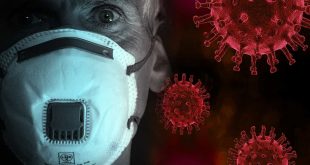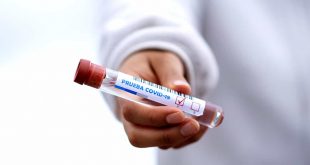Thousands of lives have been saved by Australia’s swift efforts to slow the spread of coronavirus, Scott Morrison has said, but the focus must now shift to flattening a new curve.
And it’s one that impacts virtually everybody in the country and will be much tougher to tackle — the curve of unemployment.
Speaking in Canberra today, the Prime Minister said the success in keeping a lid on the COVID-19 pandemic with strict social distancing measures had come at a hefty cost.
“That cost will continue so long as we have Australians in a position where they are unable to open their businesses and go back to the offices, have children unable to go back to school, and with the many restrictions still in place,” Mr Morrison said.
National cabinet met today to continue discussions about easing restrictions, the framework for which is to be announced on Friday.
A staged return to normal life will help to get money flowing through the national economy again, which is losing about $4 billion a week due to restrictions, Mr Morrison said.
“We now need to get one million Australians back to work – that is the curve we need to address,” he said.
“We have had great success on flattening the health curve, and that is great and we all wanted that, but it has come at a price and we have to now start balancing that up.”
RELATED: Follow the latest coronavirus updates
Which restrictions will be eased and when, as well as whether there will be uniformity across the states and territories, remains to be seen.
“At the end of the day every premier, every chief minister, has to stand in front of their state and justify the decisions that they’re taking in terms of the extent of the restrictions that are in place,” Mr Morrison said.
“The trade-off that they are making is between people having jobs and the impact on the containment of the coronavirus.
“My view has always been this, and I’ve said it from this podium many times, just having a low number of cases is not success particularly when you have a lot of people out of work.”
The consequences of the coronavirus crisis have been steep, with more than one million Australians having Jobseeker support claims processed.
“Around five million are estimated to be on JobKeeper (payments) and one million, or more, are accessing their superannuation of almost $10 billion,” the PM said.
And about $7 billion has flowed to 384,000 businesses in stimulus to date.
RELATED: When will lockdown restrictions ease in my state?
“The national cabinet are not in any way unaware of the serious implications of the decisions we have had to take now over many months, and that is why we are not seeking to delay any time at all in terms of trying to get things moving again, but we must be able to move them forward safely,” Mr Morrison said.
Getting Australians back to work will require significant efforts to develop a “COVID-19 safe economy”, which he conceded would be no small feat.
“What matters is how you deal with it, and how you respond to it, and it is important that businesses, employees and employers have the tools to deal with the COVID-19 environment and ensure they are all working together to support a COVID-19 safe workplace,” he said.
Attorney-General Christian Porter said the Safe Work Australia website had been rebuilt with a wealth of information on workplace and health and safety in this new environment.
That includes 1300 web pages with details applying to 23 different industries on everything from cleaning standards to customer interaction guidelines.
Neville Power, who is leading the National COVID-19 co-ordination Commission, said his team has been working with businesses, peak bodies, unions and professional associations on four key challenges to getting back to work.
“The first is reconfiguring and restructuring worksites to make jobs safe in those worksites,” Mr Power said.
“That is very much a business by business proposition under the guidelines of social distancing and personal hygiene.”
The second is how to respond in the event there is a coronavirus outbreak in a workplace, particularly when it comes to contact tracing.
“And then (thirdly), how do we return that worksite to a safe place to work as quickly as we can.”
The fourth challenge, which Mr Power described as “very important”, is the clear flow of communication between all parties to understand what supports are in place.
“So, my message to business is a very, very simple – continue to work with your employees to find ways of configuring your business so you are able to introduce the restrictions on social distancing and hygiene into your normal business activities, and have plans in place and be ready as the restrictions change that you can continue to do that as more customers are coming into your business.”
 The Argus Report Read about it!
The Argus Report Read about it!




